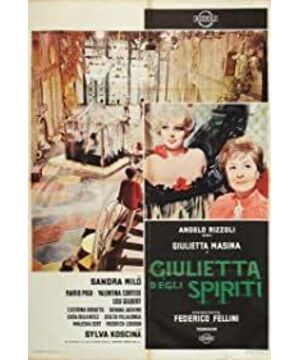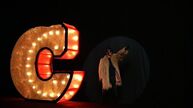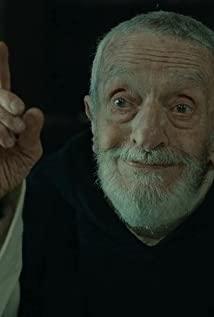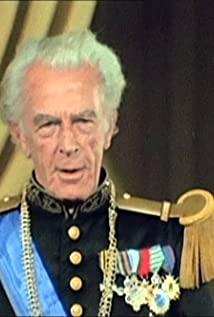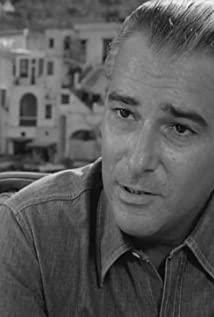If you don't plan to spend two hours watching this movie, you can spend a few minutes in the spirit of fast food to watch the following main line
. someone else's name. So Juliet went to a medium for help.
In one third of the picture, Juliet was a little uneasy and anxious while waiting for the psychic to bathe and change.
The medium is the white one in the middle, and the two next to it are assistants. she? /he? The solution given is to have sex with the husband.
On the way home after visiting the medium, Juliet tells the story of her grandfather eloping with a circus dancer when she was a child.
(Fellini has a soft spot for circuses, a very important image in the movie. For example, "The Road", "Eight and a Half" and "Joker" have appeared in circuses many times. Fellini ran away from home when he was young. Joined the circus and wandered for a few days.)
Juliet returned to her husband at night and heard his phone call to her lover, she was even more disturbed, worried that her husband would abandon her. In order to confirm whether her husband was really cheating, she was led by her sister to find a private detective to follow her husband.
When returning the neighbor's cat, I met my neighbor, Suzy, a high-class prostitute living in an old villa (the same actor as the circus dancer). Suzy persuaded her to have fun. Suzy's room is full of baroque orgy style.
In her bedroom, there is a slide that leads to a pool like a vagina.
Private detectives are showing Juliet the evidence of her husband's cheating. Juliet was heartbroken after it was confirmed her husband was indeed cheating on a 24-year-old model. I think Juliet's dress here is very interesting, like a Chinese knight. In fact, in this movie, several sets of Juliet's costumes are full of Chinese elements.
After dressing up that night, Juliet visited her neighbor Suzy's ancient villa for the second time and wandered aimlessly at the party.
Juliet was sad at the party alone and burst into tears. The twisty plot is replaced with microscopic action.
Under the guidance of Suzy, Juliet was about to have a good time with the beautiful boy in Suzy's room, but was frightened by the vision of a "little girl on fire" and fled the villa.
After escaping from the villa and returning home, these fantasy monsters began to slowly and unscrupulously "invade" her life. Like meeting Suzy in the bathroom.
I suddenly saw such a sexually naked woman at a reception in my own garden. Therefore, some people have always said that this is not a woman's heart, but more like Fellini's obscenity as a male director.
husband finally ended his long trip home for dinner, but he will soon go to Milan for business.
In the scene where the husband comes home for dinner, Juliet and her husband do not appear in the same picture most of the time, but when they appear in the same picture, they are separated at both ends of the picture. Implying that the two are inseparable.
After her husband left, Juliet was completely out of balance. All the monsters and monsters come into the house.
There you go, I've (badly) covered the "main story" of the movie, so I'll stop here, leave the ending out, and leave some suspense.
However, this is not how masters tell stories. If you watch it yourself, you will find that there is no "mainline" in this movie at all. Or the "mainline" is cut to pieces by a large number of carnival-like dreams, memories, and fantasies.
In the 1957 Cahiers du Cinéma, Bazin, a film critic who is so powerful that he can see through everything, wrote an article "
Fellini successfully completed the Neorealist revolution, creating a genre without any dramatic coherence, based solely on the phenomenological description of the characters. In Fellini's work, scenes that establish logical relationships, 'significant' sudden changes and dramatic stretches serve only as a link, while long descriptive passages, which ostensibly have no effect on the advancement of 'action', are really important revealing scene.
This passage almost prophetically points out this quality in Fellini's films. The so-called "main line" in Fellini's films is only for the film to continue, and those unplotted passages are the ones that reveal the essence. He is like a child who can't concentrate. He can't stop his desire to watch. He looks around and is keen on those "secondary information", such as the peak scene transition that has been used in "Eight and a Half". and scene scheduling.
This presentation also mirrors the nonlinear conscious activities of human beings.
As Jung pointed out: even if we have developed to the high stage of civilization, human consciousness has not yet achieved a moderate continuity. It is still fragile and prone to falling apart. When you want to focus on one thing, you have to exclude everything else that might grab your attention. This characteristic of Fellini's "viewing perspective" can be summed up in Chen Danqing's comments on the Venetian painter Carpazio in "Parts":
"The important thing is not the story, but the scene; what is attractive is not necessarily the plot, but It is the viewing itself."
It is precisely Fellini's transparent viewing perspective that captures the unconscious level of the characters and the chaotic nature of life. Juliet, presented from Fellini's point of view, is a "soul in turmoil" being watched. Each scene is a meticulous record of "phenomenon" or "psychological phenomenon", focusing on events rather than plots, breaking the distinction between primary and secondary events from a psychological and dramatic point of view.
There is not even a dramatic coherence between plays.
For example, Juliet went to a psychic for help and recalled that her grandfather and her lover eloped, and there was no storyline connection, but a flow of human consciousness. After the confrontation with the mistress failed, it was very accidental that the husband suddenly went home for dinner and then left again. It did not promote the plot and drama of the whole film, but the director would still spend a lot of film to show the husband and wife through rich lens language. The two have their own concerns. The crisis of life is usually the accumulation of the influences and various events of a person's life course, rather than a chain of interlocking layers.
It is in this sense that this is the revolution of Neorealism - Italian Neorealism against Hollywood's screening of reality in the service of a storyline.
"The neorealist film does not concoct reality, it strives not only to preserve the contingency and near-anecdotal chronology of a series of events, but also to preserve the phenomenological integrity of the treatment of each event. (In "The Bicycle Thief") During the process of looking for a car, the child suddenly wanted to urinate, so let him do so; when the showers hit, the father and son had to hide by the door where the car could be walked to avoid the rain, so we had to put the car-hunting task together with them and wait for the rain. It 's sunny."
- Bazin, "What is Cinema? "
This series of events that maintains its own specificity, uniqueness, and ambiguity are the basis for making the film real.
In his article "Night of Cabiria" - The End of the Neorealist Journey, Bazin predicted that Fellini would lead us out of the boundaries of realism, into a new realm, and to establish the reality of appearances. Fellini really established his style and status after the "Solitary Trilogy" ("Nights of Cabiria" (1957), "The Liar" (1955) and "The Road" (1954)). "The Betrayal Trilogy" ("The Sweetness of Life" (1960), "Eight and a Half" (1963) and "The Elf Juliet" (1965)).
If, in 1960's "La Dolce Vita", Fellini also tried to maintain a delicate balance between reality and fantasy, then in "Eight and a Half", the relationship between meaning and appearance is completely reversed, and appearance as a This unique discovery unfolds before our eyes, maintaining its own power of vividness and detail. And "Juliet and the Devil" completely pushes this style to the extreme.
This article was originally published on the WeChat public account: fire_stealer.
Welcome to pay attention. Please indicate the source.
View more about Juliet of the Spirits reviews


